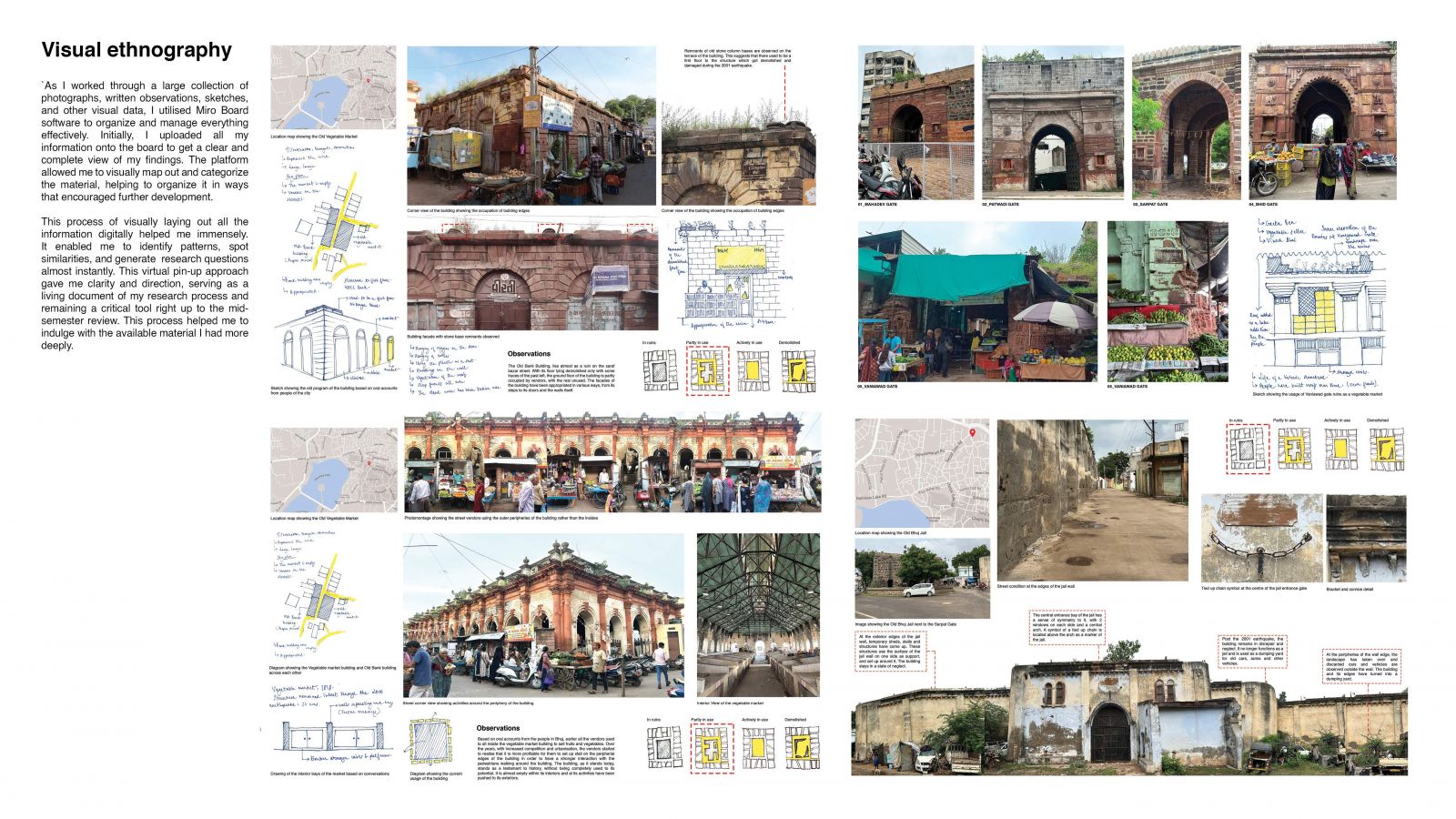Your browser is out-of-date!
For a richer surfing experience on our website, please update your browser. Update my browser now!
For a richer surfing experience on our website, please update your browser. Update my browser now!
This research explores Saraf Bazaar, a historic market street in Bhuj, where ruined buildings reflect cycles of neglect, preservation, and transformation. These ruins, shaped by shifting power dynamics involving royals, colonial authorities, and local traders, offer insights into the street’s complex political history. Focusing on four partially ruined buildings—the Chavdi Police Station, the Nagaarkhana Gate, the Old Vegetable Market, and the Bhid Chabutra—the study examines their emergence, decline, and transformation. Neglected buildings, unlike intact ones, reveal histories of decay and obsolescence, uncovering Saraf Bazaar as a contested site where architecture acts as a medium of power and assertion.
View Additional Work








